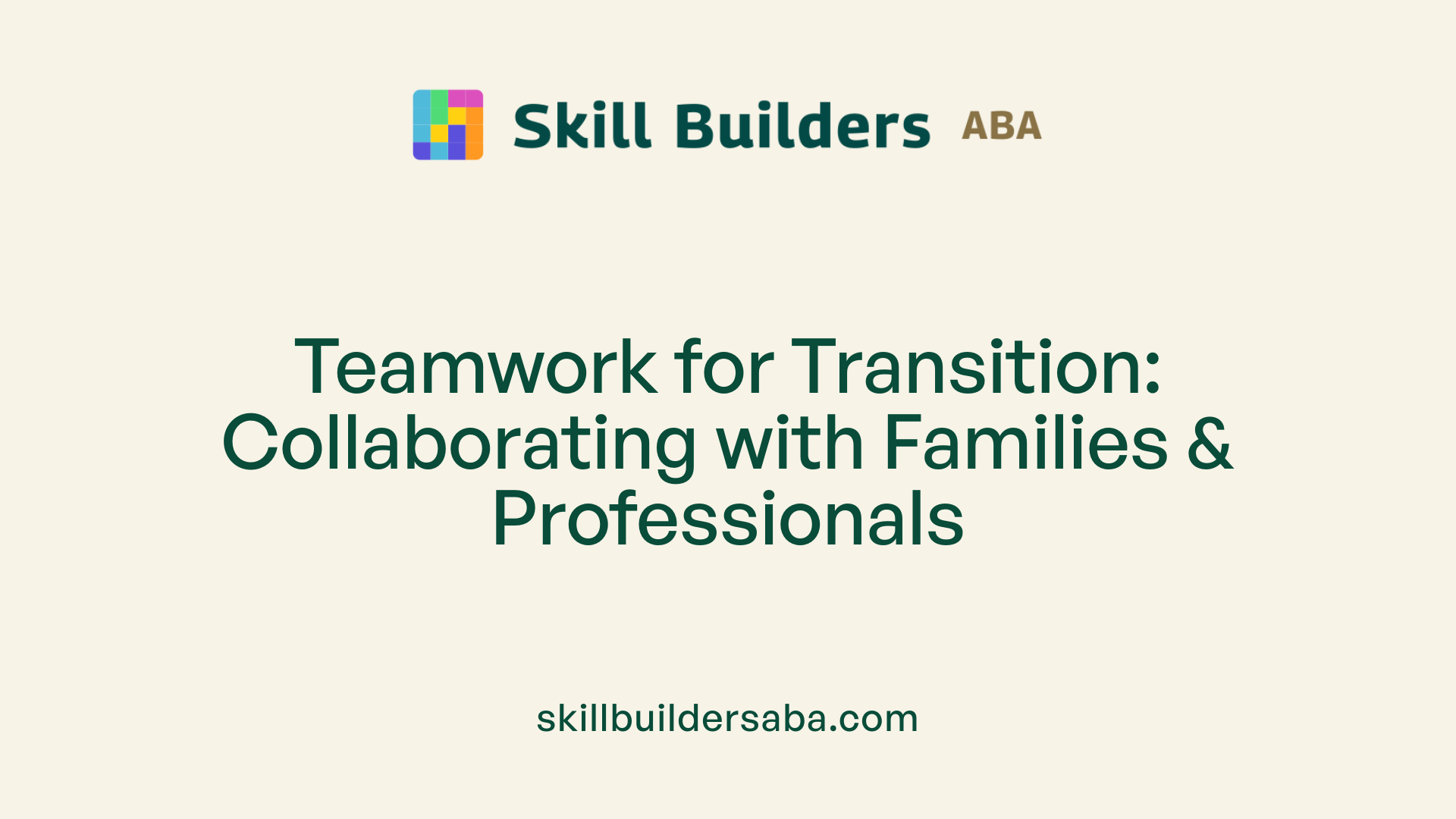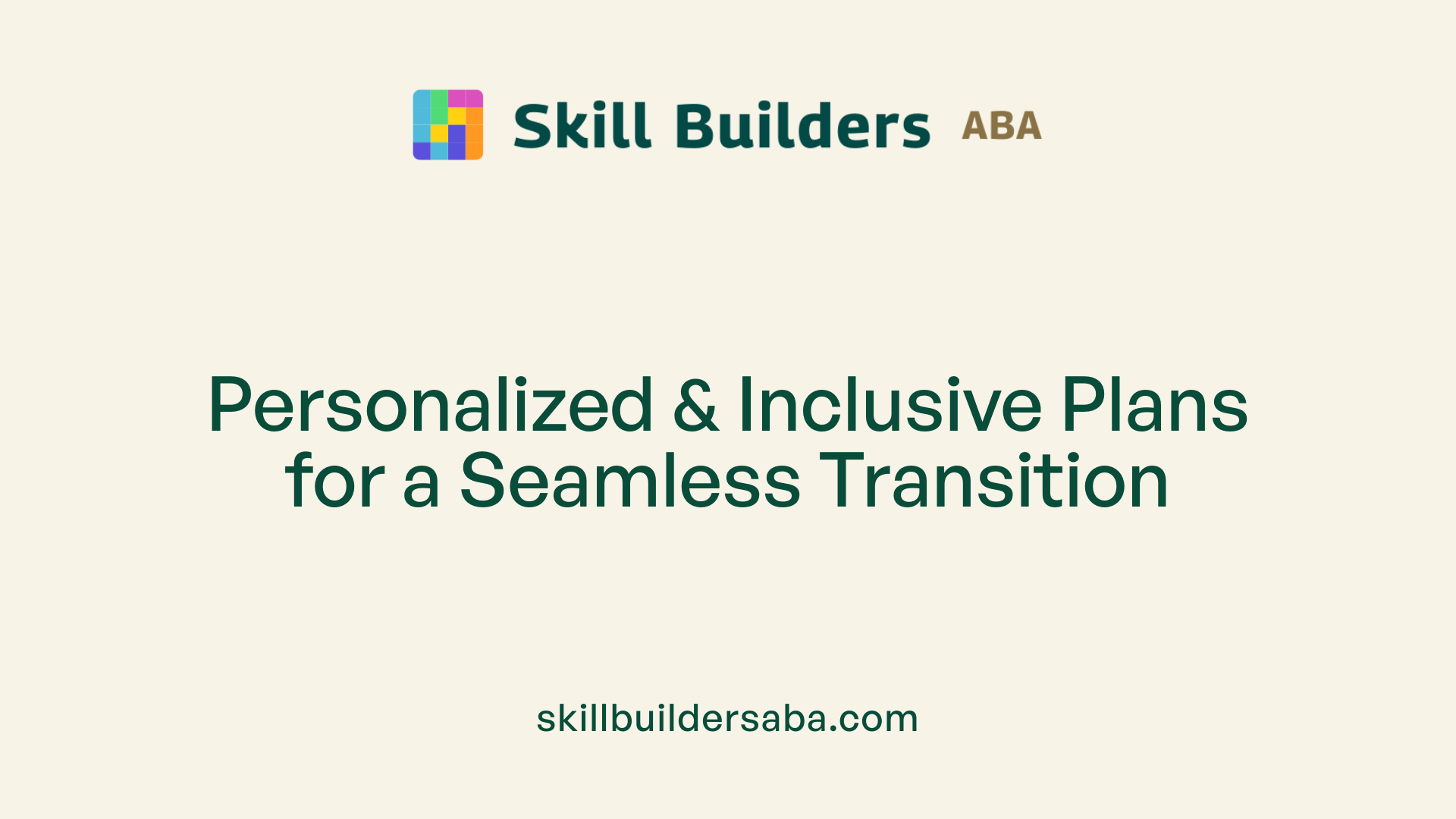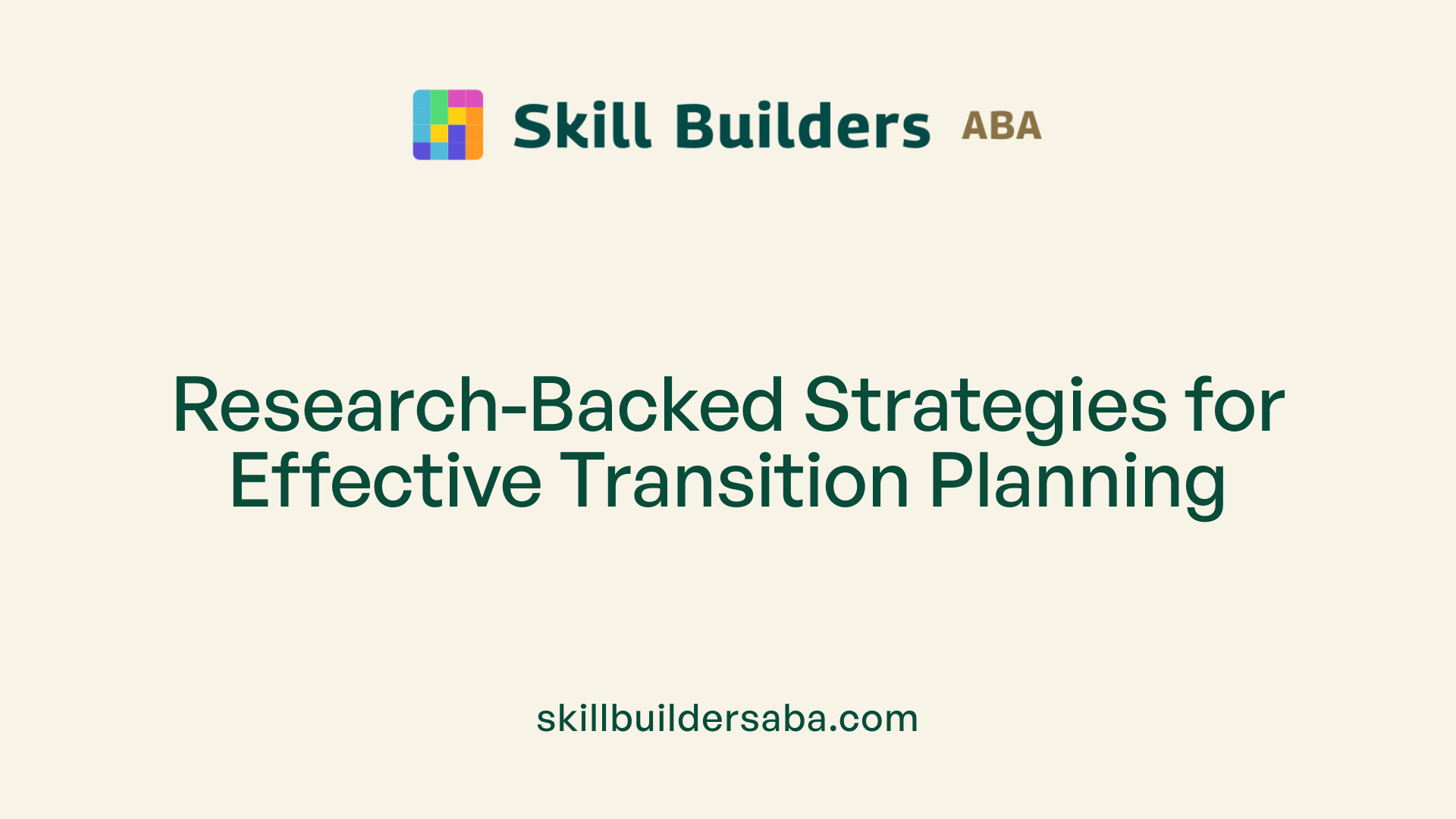
Creating transition plans for older teens in ABA
Empowering Adolescents: Strategic Approaches to Transition Planning in ABA
Understanding the Importance of Transition Planning in ABA for Teen Autonomy
Transition planning for older teens with autism within ABA therapy is a critical process aimed at fostering independence and supporting successful adult outcomes. It involves a comprehensive, individualized approach that integrates assessments, skill development, and collaboration among various stakeholders. This article explores the strategies, components, best practices, and research findings surrounding effective transition planning, providing a roadmap for professionals and caregivers committed to empowering teens towards a self-sufficient future.
Foundations of Transition Planning in ABA Therapy
How does ABA therapy promote independence in teens with autism?
ABA (Applied Behavior Analysis) therapy plays a vital role in helping teens with autism gain independence by offering personalized, structured interventions. Therapists work closely with each individual to develop tailored programs targeting essential life skills.
ABA uses techniques like task analysis, which breaks complex activities into simple, manageable steps. This makes learning routines such as self-care, social interactions, and daily tasks much easier for teens. Positive reinforcement is another core method, encouraging teens to practice these skills consistently and with confidence.
Supporting independence also involves ongoing progress monitoring, adapting strategies as teens grow, and collaborating with families and educators. Through community-based activities and vocational training, ABA helps teens transition smoothly into adult life, fostering greater autonomy.
What key life skills are taught through ABA therapy?
ABA therapy equips teens with a broad range of skills necessary for independent living. Some of the most common include:
| Skill Area | Techniques Used | Examples |
|---|---|---|
| Self-care | Task analysis, prompting, positive reinforcement | Brushing teeth, showering, dressing |
| Communication | Verbal expression, prompting and fading, social skills training | Using words or alternative methods to express needs |
| Social Interaction | Role-playing, understanding social cues | Making friends, conflict resolution |
| Decision-making | Role-playing, modeling | Choosing appropriate activities, problem solving |
| Daily Living Skills | Community integration, life skills training | Cooking, money management, shopping, room organization |
| Transportation and Mobility | Visual schedules, practice in real settings | Using buses or rideshare services safely |
The goal is to equip teens with practical skills, boosting their confidence and preparing them for a future of greater independence.
Essential Components of a Personalized Transition Plan

What are the key components of an effective transition plan for older teens with autism in ABA therapy?
Creating a successful transition plan for teens with autism involves several crucial elements. First, it must be tailored to the individual, based on thorough assessments of their current skills, strengths, and areas needing growth. This helps set realistic, measurable goals that focus on social skills, communication, daily living, and vocational readiness.
An effective plan also emphasizes collaboration. Families, educators, therapists, and community resources work together to create a seamless support network. Communication among these parties ensures that the teen’s needs are addressed in various environments—home, school, and community.
Gradually, the plan aims to enhance the teen’s independence by focusing on important life skills. These include self-care routines, decision-making, and employment preparation. Goals should align with the teen’s interests and future aspirations, promoting motivation and engagement.
Progress monitoring is vital. Regular data collection and review allow adjustments to be made to the plan, ensuring that goals are achievable and still relevant. This ongoing evaluation helps determine when the teen is ready for a transition to less intensive services or adulthood.
Early planning is essential. Starting around age 14 to 16, the process involves developing a comprehensive vision for the future. Caregiver training and involvement prepare families to support ongoing skill development and independence.
Ultimately, a well-structured transition plan provides a roadmap toward greater autonomy, ensuring teens with autism are equipped with the skills and supports needed for successful adult lives.
Strategies for Collaborative Transition Planning

How can caregivers and professionals facilitate smooth transitions for older teens with autism through ABA programs?
Supporting teens during major life changes requires a coordinated approach that involves both family members and professionals. In ABA therapy, this begins with creating personalized transition plans that reflect the teen’s individual strengths, interests, and future goals. These plans serve as a roadmap to guide the transition process smoothly.
Implementing evidence-based ABA techniques is crucial. Visual supports like schedules and social stories help teens understand upcoming changes and reduce uncertainty. Priming and modeling prepare the teen for what to expect, while behavioral momentum—building on successes—encourages cooperation. Consistent communication is essential; giving advance notice of transitions, using timers, or countdowns helps teens mentally prepare.
Rehearsals or practice sessions are valuable activities. Role-playing routines or transitions reinforce skills and make real-world changes less stressful. Engaging teens in community skills training, such as navigating transportation, shopping, or managing money, directly promotes independence.
Ongoing progress assessments allow for the intervention strategies to be adjusted based on evolving needs. This flexibility ensures that the transition supports the teen’s growth toward greater autonomy. Regular collaboration among caregivers, therapists, educators, and outside agencies ensures a comprehensive support system.
By actively involving the teen in planning and practicing future scenarios, ABA programs help reduce anxiety and build confidence. These strategies foster a sense of control and readiness, making the transition into adulthood smoother and more successful.
Creating Effective and Accessible Transition Plans

What are best practices for creating transition plans tailored to adolescents with autism in ABA?
Developing transition plans that truly support adolescents with autism requires thoughtful, individualized approaches. Best practices emphasize customizing goals to match each teen’s strengths, preferences, and future aspirations. This process begins with thorough assessments that identify the teen’s current skills, challenges, and interests.
A collaborative team approach is essential, involving family members, professionals, educators, and the teens themselves whenever appropriate. Regularly reviewing and updating the plan ensures it stays aligned with the teen’s growth and changing circumstances.
Setting clear, measurable, and realistic goals is vital. These might include skills related to daily living, employment readiness, or community involvement. The plan should outline specific steps to achieve these goals, including training, resources, and supports.
Accessibility plays a critical role in effective transition planning. Adhering to standards like WCAG 2.1 Level AA ensures that all information, tools, and communication methods are accessible to people with diverse needs. This includes using accessible technology, visual supports, and communication aids.
Furthermore, providing accommodations such as accessible medical devices or environments allows teens to navigate health-related systems confidently. The integration of such supports helps promote health independence and overall wellbeing.
Incorporating these practices creates a comprehensive, responsive, and inclusive transition plan that supports teens with autism in achieving their full potential, paving the way for a successful transition into adulthood.
| Aspect | Description | Additional Details |
|---|---|---|
| Individualization | Tailor goals and strategies to the teen’s unique profile | Focus on interests, strengths, preferences |
| Collaborative Approach | Involve family, professionals, and the teen in planning | Ensure ongoing communication and feedback |
| Goal Setting | Use measurable, realistic objectives | Include daily living, employment, social skills |
| Regular Review | Update plans based on progress and changing needs | Schedule consistent assessments |
| Accessibility Standards | Follow WCAG 2.1 Level AA and other guidelines for digital access | Use accessible tech and materials |
| Accommodations | Implement supports like adaptive devices and communication tools | Tailor to individual health and safety needs |
Research Evidence Supporting Transition Planning in ABA

Are there research studies or data supporting the effectiveness of transition planning in ABA for adolescents with autism?
Yes, there is an increasing body of research supporting the benefits of transition planning within ABA for teens with autism. One notable example is the BOOST-A™ program, an online transition planning tool designed specifically for adolescents. This program has shown positive outcomes such as more opportunities for self-determination at home and improved exploration of career options. While the overall increase in self-determination was not statistically significant, these findings still highlight the potential of structured transition planning.
Moreover, behavioral strategies incorporated into ABA, like visual supports, timers, and schedules, have proven effective in facilitating smoother transitions. These tools help reduce transition time, decrease challenging behaviors, and foster a sense of independence among teens.
Research consistently points out that when transition plans are detailed and utilize visual and behavioral techniques, they lead to better skills for moving from school to post-secondary education, employment, or independent living. However, scientists emphasize that further studies are necessary to determine the long-term impact of these strategies on employment success and continued educational achievement.
Overall, integrating visual supports, clear routines, and personalized transition plans within ABA not only improves immediate transition management but also supports teens in developing essential life skills for the future.
Addressing Challenges During Transition
Transitions can be particularly challenging for teens with autism, as they often thrive on routine and predictability. Common obstacles include resistance to change, feelings of unpredictability, and difficulties in managing intense emotions.
Resistance to change often manifests when teens are asked to shift routines or environments suddenly. To smooth this process, gradual transitions are recommended. Using visual supports such as schedules or countdown calendars helps prepare teens visually for upcoming changes. Giving advance warnings, explaining what will happen next, and employing timers or countdowns foster a sense of control and reduce anxiety.
Unpredictability in new settings can cause stress. Visiting new locations beforehand, creating familiarity with the environment, and maintaining consistent routines across different settings help establish a sense of safety. Incorporating familiar objects or comfort items during transitions can also provide emotional security.
Supporting emotional regulation is crucial during these times. Validating a teen’s feelings, encouraging expression through their preferred communication means, and teaching calming strategies like deep breathing or sensory breaks promote emotional stability. A collaborative approach involving families, therapists, and educators ensures that emotional and behavioral needs are met effectively.
Effective planning and tailored strategies are essential. Combining visual tools, rehearsing routines through role-play, and fostering consistent environments help teens navigate transitions more smoothly. By addressing resistance, unpredictability, and emotional challenges collectively, teens can transition with greater confidence and independence.
Integrating Community and Vocational Skills into Transition Planning
How does ABA therapy incorporate community participation and employment skills into transition planning?
ABA therapy emphasizes practical, real-world experiences that prepare teens with autism for successful community engagement and employment. This involves customizing programs that include community visits, social skills training, and vocational activities.
What types of real-world practice are included in ABA transition strategies?
Teens practice daily living activities such as shopping, using public transportation, and working in simulated job environments. These activities help them develop independence and comfort in unfamiliar settings.
How do community and vocational training improve independence?
By gradually introducing teens to community environments and employment tasks, ABA therapy helps them build confidence, improve social interactions, and acquire skills necessary for adult life.
| Focus Area | Activities | Benefits |
|---|---|---|
| Community Inclusion | Visits to local stores, parks, and public spaces | Builds familiarity and reduces anxiety |
| Employment Readiness | Job shadowing, skill-specific tasks | Prepares for actual work settings |
| Social Skills | Interacting with peers and adults | Enhances communication and social confidence |
Can these activities be tailored to individual goals?
Absolutely. Transition plans are personalized, involving assessments of the teen's interests and aspirations. Collaboration with families, educators, and vocational specialists ensures that community and work experiences align with each teen’s future plans.
How does this integration support a successful transition to adulthood?
Combining practical community engagement with employment skills creates a seamless pathway from education to independence. Teens gain essential life skills, confidence, and real-world experience, making their transition smoother and more sustainable.
Long-Term Outcomes and Success Measurement
 Assessing the success of ABA therapy in fostering independence among teens with autism involves careful progress tracking and milestone achievement. Therapists, families, and educators monitor ongoing development through personalized goals, focusing on whether teens are acquiring essential life skills such as self-care, communication, and social interaction.
Assessing the success of ABA therapy in fostering independence among teens with autism involves careful progress tracking and milestone achievement. Therapists, families, and educators monitor ongoing development through personalized goals, focusing on whether teens are acquiring essential life skills such as self-care, communication, and social interaction.
Independence milestones may include teens managing daily routines, participating in community activities, or gaining employment. Success metrics are often quantitative, like reduced reliance on prompts, or qualitative, such as increased confidence and autonomous decision-making.
Regular assessments help evaluate if the interventions are effective, allowing for adjustments to treatment plans. Additionally, success in transition planning is measured by how well teens achieve post-secondary goals like college enrollment, job placement, or independent living.
Ultimately, long-term success reflects a significant improvement in quality of life, where teens are equipped with skills to navigate adulthood confidently. Incorporating consistent progress monitoring and milestone evaluation ensures that progress in transition planning for autism is meaningful and sustained.
Supporting a Transition-Ready Future for Teens with Autism
Creating effective transition plans in ABA for older teens with autism requires a personalized, collaborative, and evidence-based approach. By integrating comprehensive assessments, targeted skill development, visual supports, and community engagement, caregivers and professionals can facilitate smoother transitions and foster independence. Emphasizing early planning, accessibility, and ongoing progress monitoring ensures that teens are well-prepared for the complex journey into adulthood, ultimately enhancing their quality of life and capacity for self-sufficiency.
References
- ABA Therapy for Teens: Building Independence
- Making Transitions Easier: ABA Tools for Everyday Routines
- Autism Transition Strategies: Helping Children Adapt with ...
- Planning the transition to adulthood for youth with disabilities
- Using ABA Strategies to Support Transition and Routine
- Powerful ABA Therapy Strategies That Help Teens Thrive
- Building a Bridge: Tips for Helping Children with Autism ...
- Transition Planning for Autistic Adolescents and Young ...
Reach Out Today
Learn more about how we can support your child’s growth and development. Contact us to discuss our services and availability in your area.
.svg)